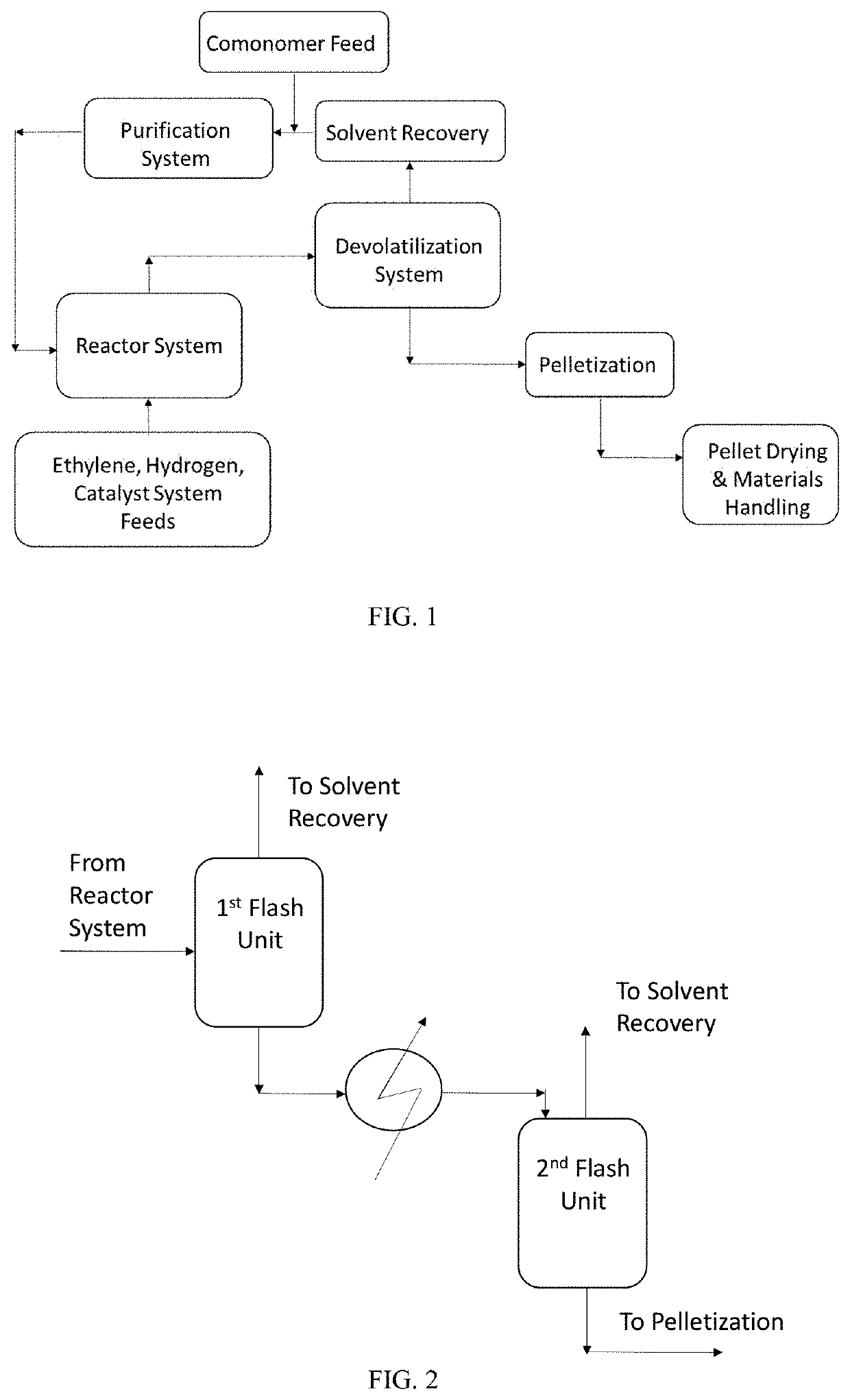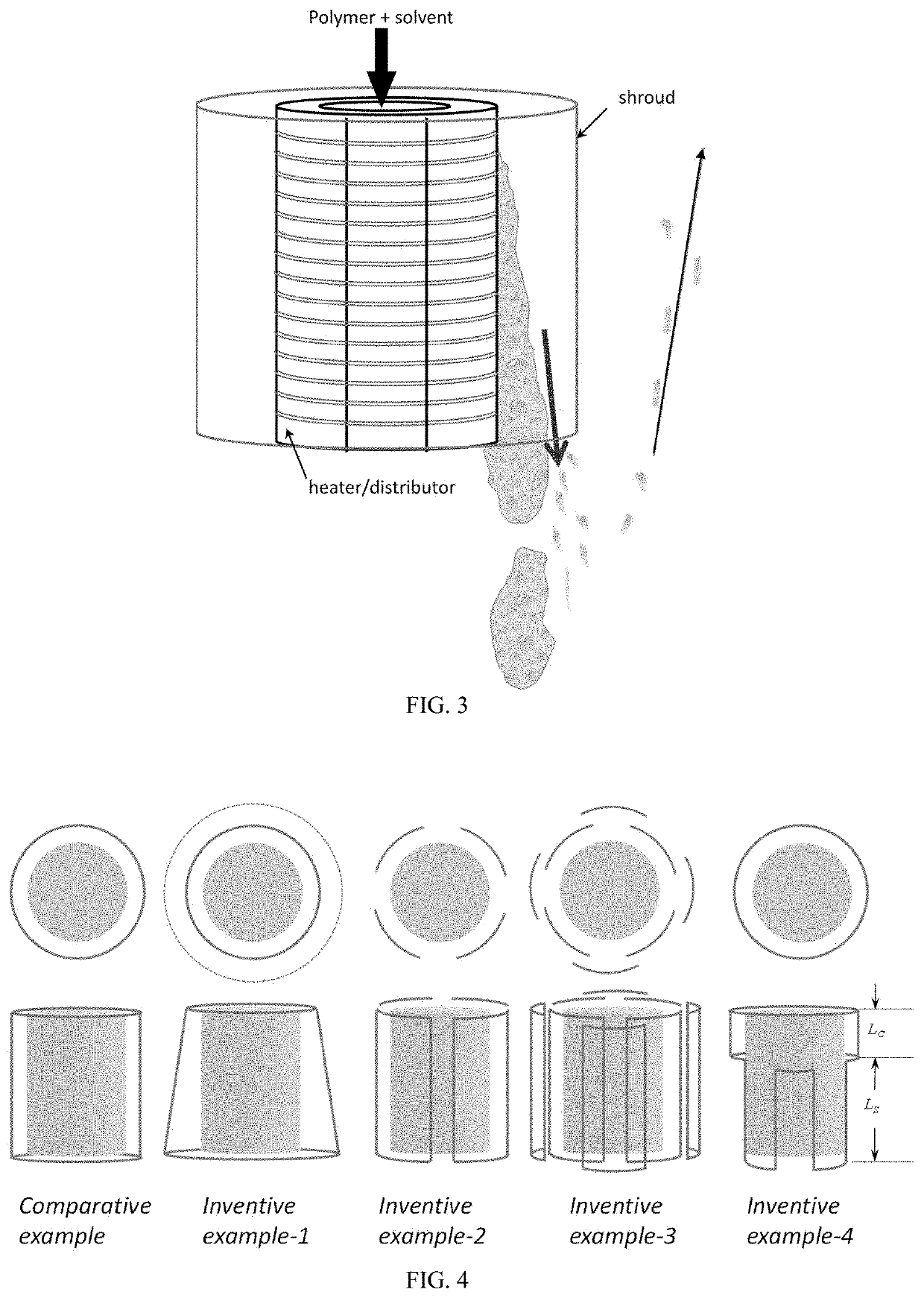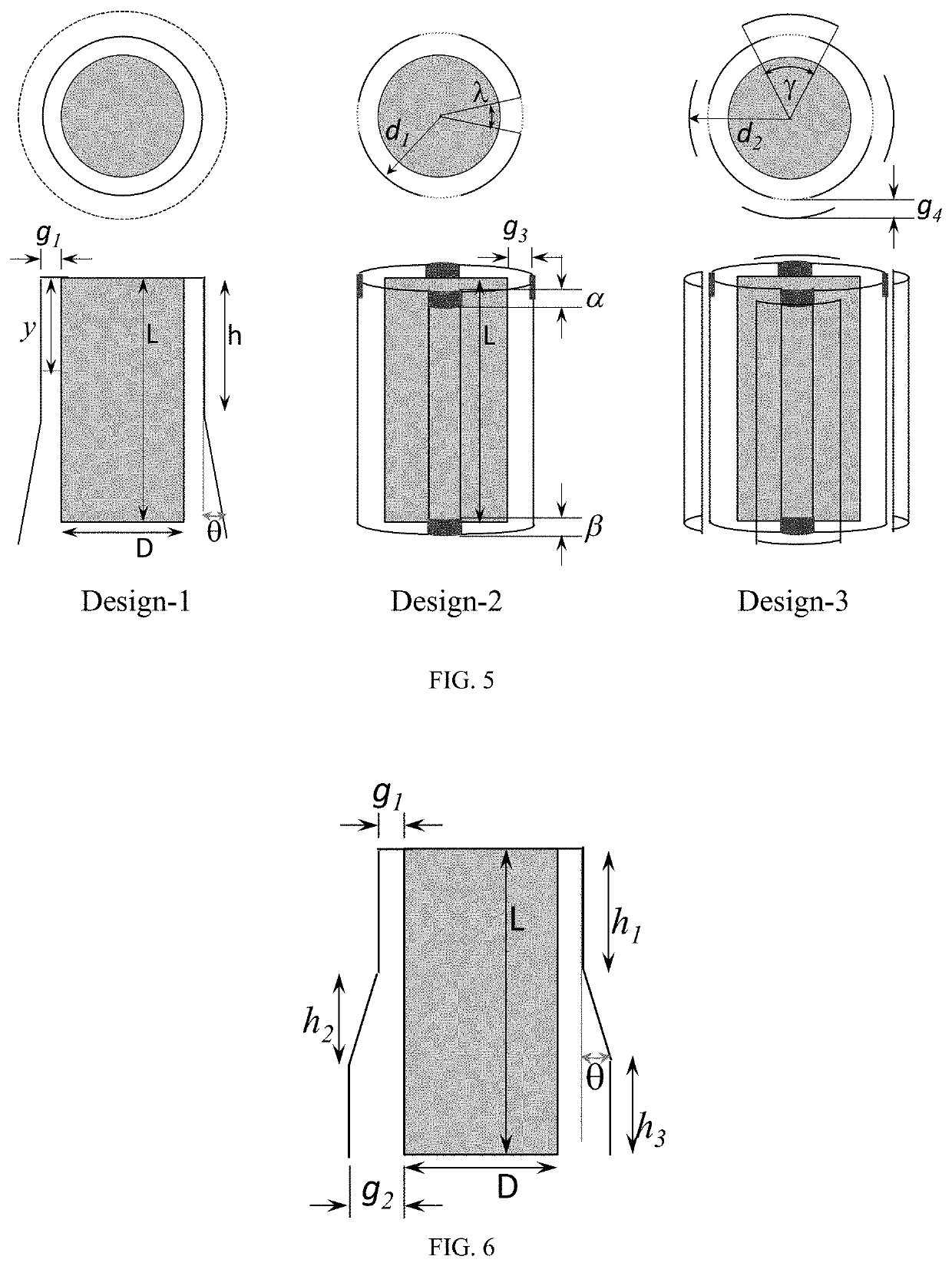Devolatilizer design
a devolatilizer and design technology, applied in the field of devolatilizer design, can solve the problems of reducing the effectiveness of fouling of condensers, affecting the efficiency of vacuum condensers, and the typical devo design experiencing high polymer carryover into the vents and eventually into the vacuum condensers
- Summary
- Abstract
- Description
- Claims
- Application Information
AI Technical Summary
Benefits of technology
Problems solved by technology
Method used
Image
Examples
Embodiment Construction
[0018]As discussed above an apparatus is a devolatilizer (devo), as discussed above (see Summary of Invention), is provided.
[0019]The devolatilizer (devo) may comprise two or more embodiments described herein.
[0020]In one embodiment, the polymer-rich solution comprises ≥60 wt %, or ≥70 wt %, or ≥80 wt %, or ≥90 wt %, or ≥95 wt % of the polymer, based on the weight of the polymer-rich solution.
[0021]In one embodiment, the width (w) of the gap varies along the length L.
[0022]In one embodiment, the width (w) of the gap varies continuously along the length L.
[0023]In one embodiment, the width (w) of the gap varies discontinuously along the length L.
[0024]In one embodiment, L is from 10 cm to 200 cm, or from 20 cm to 180 cm, or from 30 cm to 160 cm.
[0025]In one embodiment, for each distance y, the average vertical downward velocity from 1 m / s to 10 m / s, or from 1 m / s to 8 m / s, or from 1 m / s to 6 m / s, or from 1 m / s to 4 m / s.
[0026]In one embodiment, the radial average velocity exiting the ...
PUM
| Property | Measurement | Unit |
|---|---|---|
| velocity | aaaaa | aaaaa |
| temperature | aaaaa | aaaaa |
| θ | aaaaa | aaaaa |
Abstract
Description
Claims
Application Information
 Login to View More
Login to View More - R&D
- Intellectual Property
- Life Sciences
- Materials
- Tech Scout
- Unparalleled Data Quality
- Higher Quality Content
- 60% Fewer Hallucinations
Browse by: Latest US Patents, China's latest patents, Technical Efficacy Thesaurus, Application Domain, Technology Topic, Popular Technical Reports.
© 2025 PatSnap. All rights reserved.Legal|Privacy policy|Modern Slavery Act Transparency Statement|Sitemap|About US| Contact US: help@patsnap.com



